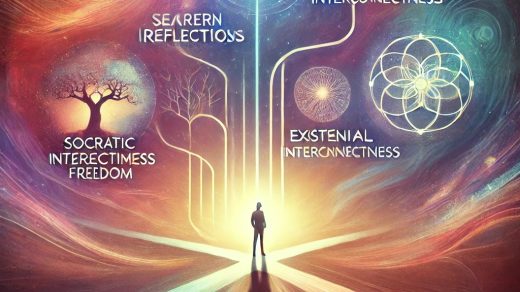Communication is the foundation of human relationships—whether in personal life or professional settings. While indirect communication can be useful in simple, non-critical situations, when it comes to important life decisions, it often does more harm than good.
In relationships and workplaces, direct communication—when done constructively—is essential for avoiding misunderstandings, resolving conflicts, and building trust. In this article, I will explain why indirect communication fails in high-stakes situations and provide real-life examples of how it has damaged both relationships and professional environments.
1. When Is Indirect Communication Useful?
Indirect communication—where people hint at their thoughts instead of stating them outright—has its place in certain situations:
✅ Social Etiquette: Softening criticism to avoid hurting feelings.
✅ Casual Conversations: When details aren’t important, like deciding where to eat.
✅ Cultural Norms: Some cultures value indirectness as a form of politeness.
However, when it comes to serious matters like relationships and career decisions, indirect communication often leads to misinterpretation and unnecessary conflict.
2. The Problem with Indirect Communication in Relationships
Example: Prince Charles & Princess Diana – Avoiding Honest Conversations Led to a Broken Marriage
The marriage of Prince Charles and Princess Diana is one of the most famous cases of indirect communication destroying a relationship.
🔹 Charles never directly expressed his love or doubts – Instead of telling Diana clearly how he felt, he remained emotionally distant and kept an ongoing relationship with Camilla Parker Bowles.
🔹 Diana expressed her unhappiness through indirect means – She did interviews and spoke to the media instead of confronting Charles about their issues.
🔹 They never had direct discussions about their expectations – Both avoided open conversations, assuming the other should understand their struggles.
💔 The Result?
Their lack of direct, constructive communication led to a highly publicized divorce and emotional pain for both.
✅ How It Could Have Been Avoided:
Instead of hiding their true feelings, they could have:
✔ Had open and private conversations about their expectations.
✔ Addressed emotional distance directly rather than speaking through the media.
✔ Taken early steps to fix their relationship, instead of letting resentment grow.
3. Why Indirect Communication Fails in the Workplace
Example: Nokia’s Downfall – The CEO Never Clearly Stated the Company’s Crisis
Nokia was once the dominant force in mobile technology, but poor communication—particularly indirectness and a lack of transparency—led to its collapse.
🔹 Employees avoided telling executives the truth – Instead of clearly warning that Nokia was falling behind Apple and Android, middle management sugarcoated reports.
🔹 The CEO failed to directly acknowledge the crisis – Instead of telling the board and employees, “We are losing our position, and we need urgent innovation,” he made vague statements about competition increasing without direct solutions.
🔹 Decision-makers assumed everything was fine – Because indirect communication hid the severity of the issue, Nokia failed to react in time.
🚨 The Result?
❌ By the time Nokia acknowledged its failure, it was too late to compete with Apple and Google.
❌ The company lost its dominant market position and was eventually sold to Microsoft.
❌ Thousands of employees lost jobs due to poor leadership communication.
✅ How It Could Have Been Avoided:
✔ Employees should have spoken directly about the threats Apple and Android posed.
✔ Leadership should have addressed problems transparently, rather than relying on diplomatic but unclear statements.
✔ Nokia could have taken swift action rather than assuming it was still untouchable.
4. The Cost of Indirect Communication in Important Situations
🚫 It Creates Confusion – People misunderstand indirect messages and may not even realize there is a problem.
🚫 It Wastes Time – Instead of solving issues directly, indirect communication leads to guessing games.
🚫 It Builds Resentment – If needs aren’t met due to miscommunication, frustration and conflict grow.
🚫 It Can Damage Relationships and Careers – As seen in the examples, indirect communication can ruin connections or hold back companies from making necessary decisions.
✅ Direct Communication Is the Solution – But that doesn’t mean being rude or aggressive. The key is constructive and diplomatic communication.
5. How to Be Direct Without Being Harsh
If direct communication makes you uncomfortable, here are ways to make it clear but respectful:
✔ Use “I” Statements: Instead of saying “You never listen to me,” say “I feel unheard when my concerns aren’t acknowledged.”.
✔ State Your Needs Clearly: Be honest about what you want instead of expecting people to guess.
✔ Offer Solutions Instead of Complaints: Instead of “This isn’t working,” say “I think we could improve this by…”.
✔ Check for Understanding: Ask “Does this make sense to you?” to confirm clarity.
Conclusion: Speak Clearly, Live Better
Indirect communication may feel safe, but in important areas of life like relationships and work, it can lead to frustration, missed opportunities, and damaged connections.
💡 Key Takeaways:
✅ Indirect communication is only useful for small or casual interactions.
✅ In relationships, direct and respectful communication prevents misunderstandings and resentment.
✅ In work, speaking clearly about your goals helps you advance instead of being overlooked.
✅ Being direct doesn’t mean being rude—it means being honest, constructive, and diplomatic.
Speak clearly. Express yourself. Build stronger relationships and a better career.


